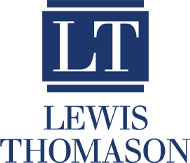By: David N. Garst

In the United States, parties to lawsuits are granted broad rights to obtain information possessed by other parties and witnesses in relation to the dispute. the process for obtaining this information is called “discovery.”
Courts permit many forms of discovery, including written questions, oral examination of witnesses, entry upon land (inspection of the project site) and examination of physical evidence, and the copying and examination of documents and electronically stored information. The litigants’ discovery rights are enforced by the full power of the court systems, and failure to adhere to the rules of discovery can result in harsh sanctions.
What Can Be Discovered
Every type of document and electronically stored information may be subject to discovery. For a design professional, this might include contracts, correspondence, meeting minutes, emails, calculations, drawings, payment requests and approvals, completion certificates, photographs and video, and financial records. Even text and photo messages, as well as information posted on social media such as Facebook, Instagram, and Twitter, may be discovered under some circumstances.
To read the entire article please click here XL_DP_Communique_Jul2014_US





